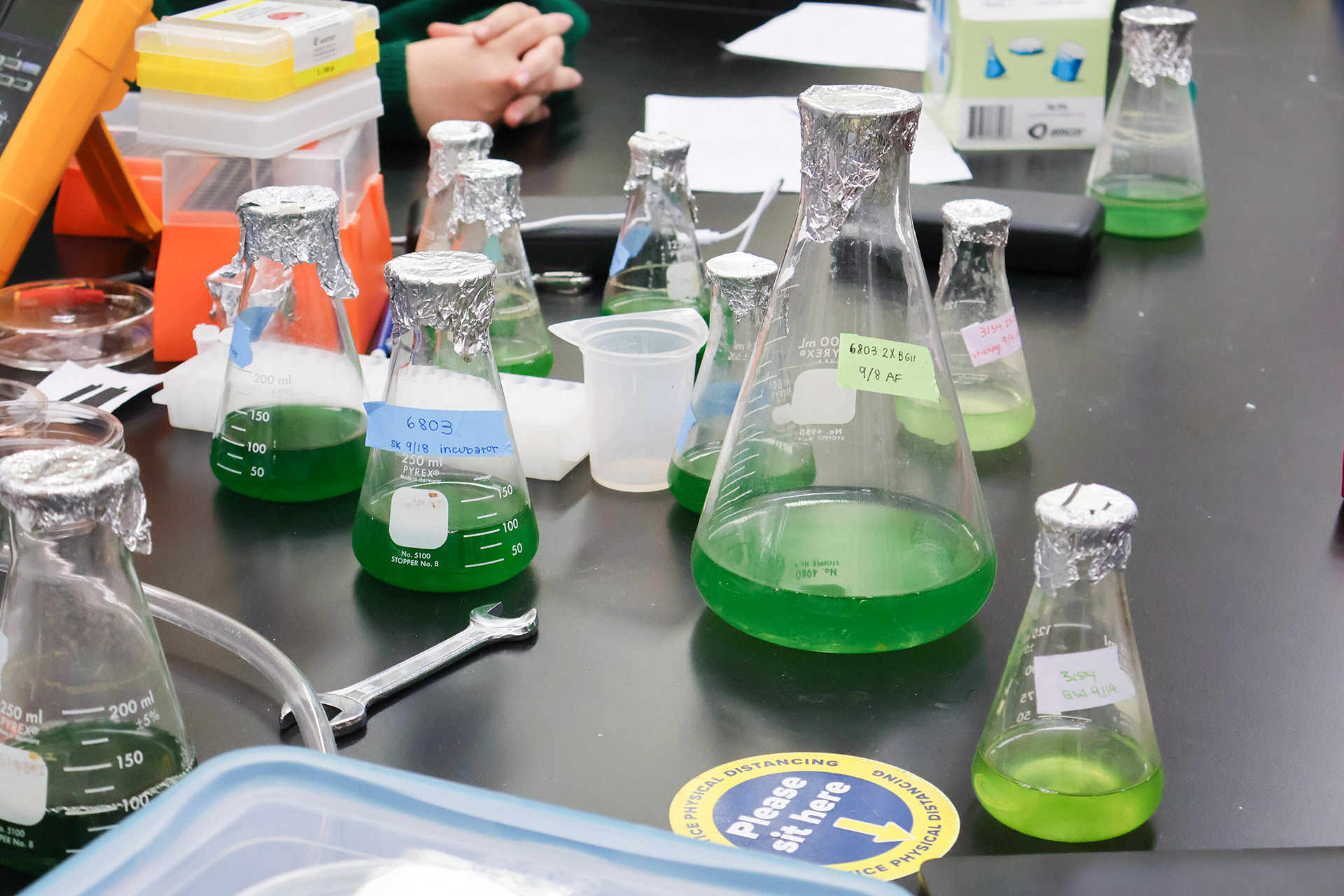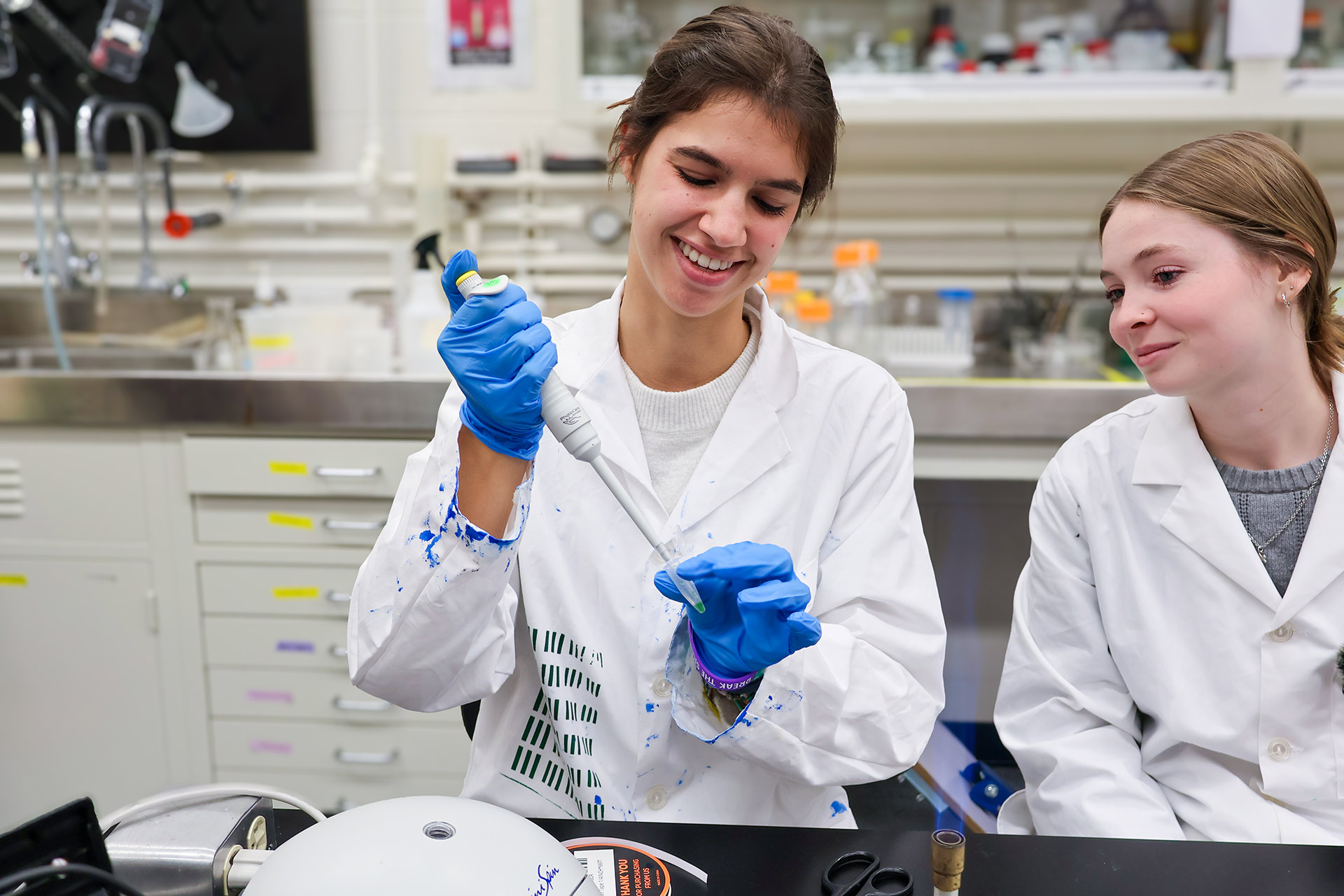A University of Rochester team harnessed bacteria to capture carbon dioxide and generate energy.
Rising carbon dioxide levels are exacerbating the effects of climate change, highlighting the need for solutions that balance energy demands with environmental sustainability.
What if there were a way to turn carbon dioxide itself into a resourceâproducing energy while reducing harmful emissions at the same time?
A team of 11 undergraduate students at the has done just that. The team created a carbon-negative energy source that uses bacteria to generate energy while simultaneously capturing and storing carbon dioxide. Their innovative approach not only addresses energy needs but also produces ethanol as a sustainable biofuel.
In October, the teamâcalled Team CyanoVoltâsubmitted their research to the 2024 where student-led teams from around the globe compete to tackle real-world challenges using synthetic biology. Synthetic biology leverages engineering principles to create biological components inspired by nature.
The Rochester team competed against more than 400 teams from around the world and was awarded a gold medal for their project.
âThe idea of a carbon-negative energy technology was exciting to the team because it can clean the atmosphere while also creating clean energy,â says , an associate professor in the and one of the advisors of Rochesterâs iGEM team. âI was incredibly impressed by the studentsâ smart project design and their dedication to keep trying to get their experiments to work over many, many rounds of optimization and improvement.â
Harnessing energy from bacteria
As part of , undergraduate students from a variety of majors design and build engineered biological systems using DNA technologies. Students lead every aspect of the project, including selecting the topic, conducting experiments, managing budgets, raising funds, and handling social media.
This yearâs iGEM team began brainstorming project ideas in the spring, spent the summer and early fall developing and conducting experiments, and submitted their project for judging in the iGEM competition in late fall. The idea for Team CyanoVoltâs project was inspired by a challenge posed by one of the team memberâs high school teachers.
âOur teacher challenged us to think of ways to reuse food waste,â recalls Grace Widjaja â26, a biochemistry and music double major. The task opened Widjajaâs eyes to the idea of finding power sources in unexpected places.
Later, when she joined iGEM in her sophomore year of college, she remembered that challenge and thought, âIf we can get energy from food, why not from other sources, like bacteria?â
Building on this idea, the Rochester team settled on a project that combined three key goals: capturing carbon dioxide, producing electricity, and generating ethanol, by genetically engineering bacteria and designing specialized biophotovoltaic cells.
âBy accomplishing these three goals, we hoped to propose a solution to alleviate our climate crisis,â Widjaja says. âI learned about synthetic biology for the first time in my freshman year of college. I had always heard of GMOs as being these terrible things, but iGEM showed me how to find ways to genetically modify organisms to produce products that help the world.â
The power of photosynthesis

To capture carbon dioxide, the team genetically engineered cyanobacteriaâa type of bacteria that naturally carries out photosynthesisâto optimize the bacteriaâs ability to absorb light and carbon dioxide. The modified bacteria operate like a tiny energy factory: when exposed to light, the bacteria capture carbon dioxide and transform it into energy-rich molecules. However, instead of just storing this energy for their own use, the engineered cyanobacteria release some of the energy as free electrons.
To harness the energy from the electrons, the team designed specialized biophotovoltaic cells. These devices function like solar cells but generate electricity using biological materials and processesâin this case, the cyanobacteria undergoing photosynthesis. The biophotovoltaic cells capture electrons and direct them into a circuit, producing electricity.
The team also developed a novel screen printer that prints customized structures within the biophotovoltaic cells to ensure the cyanobacteria are optimally placed and distributed, as well as to facilitate efficient flow of electrons.
Fueling the future
The team took the project a step further by genetically engineering the cyanobacteria to produce ethanolâa useful biofuelâas a byproduct while they carry out photosynthesis. The unique process of producing both power and biofuel simultaneously makes Team CyanoVoltâs project both environmentally friendly and efficient. The result is a renewable system that is carbon-negative; instead of just reducing emissions, it actively decreases the total amount of carbon dioxide in the environment by absorbing the carbon dioxide from the atmosphere during photosynthesis.
âIt was really novel to see bacteria being used in this way and to understand that cyanobacteria has much more capability than is often discussed in literature,â says Seeya Khattar â26, a molecular genetics major. âAs the bacteria generate power, they help lower greenhouse gas levels, offsetting any emissions they might produce and ultimately creating a net reduction in atmospheric carbon dioxide.â
Powering through challenges

Although the team faced challengesâmost notably, they initially had a difficult time growing cyanobacteria in the labâiGEM offered a unique experience to not only lead a research project from start to finish but to solve problems that led to meaningful results.
âIn research, there are a lot of problems that come up,â says Claire English â26, a computational biology and statistics double major. âWe had the hardest time growing our cyanobacteria, and now we have all these samples that are super vibrant and green and itâs the most exciting thing. Sometimes in research you question whether this is what you should be doing, but then there are these experiences, like when we finally made electricity for the first time, that are just so rewarding.â
Team CyanoVoltâs project is documented on its , offering a resource for future students or developers to refine and expand upon the ideas.





